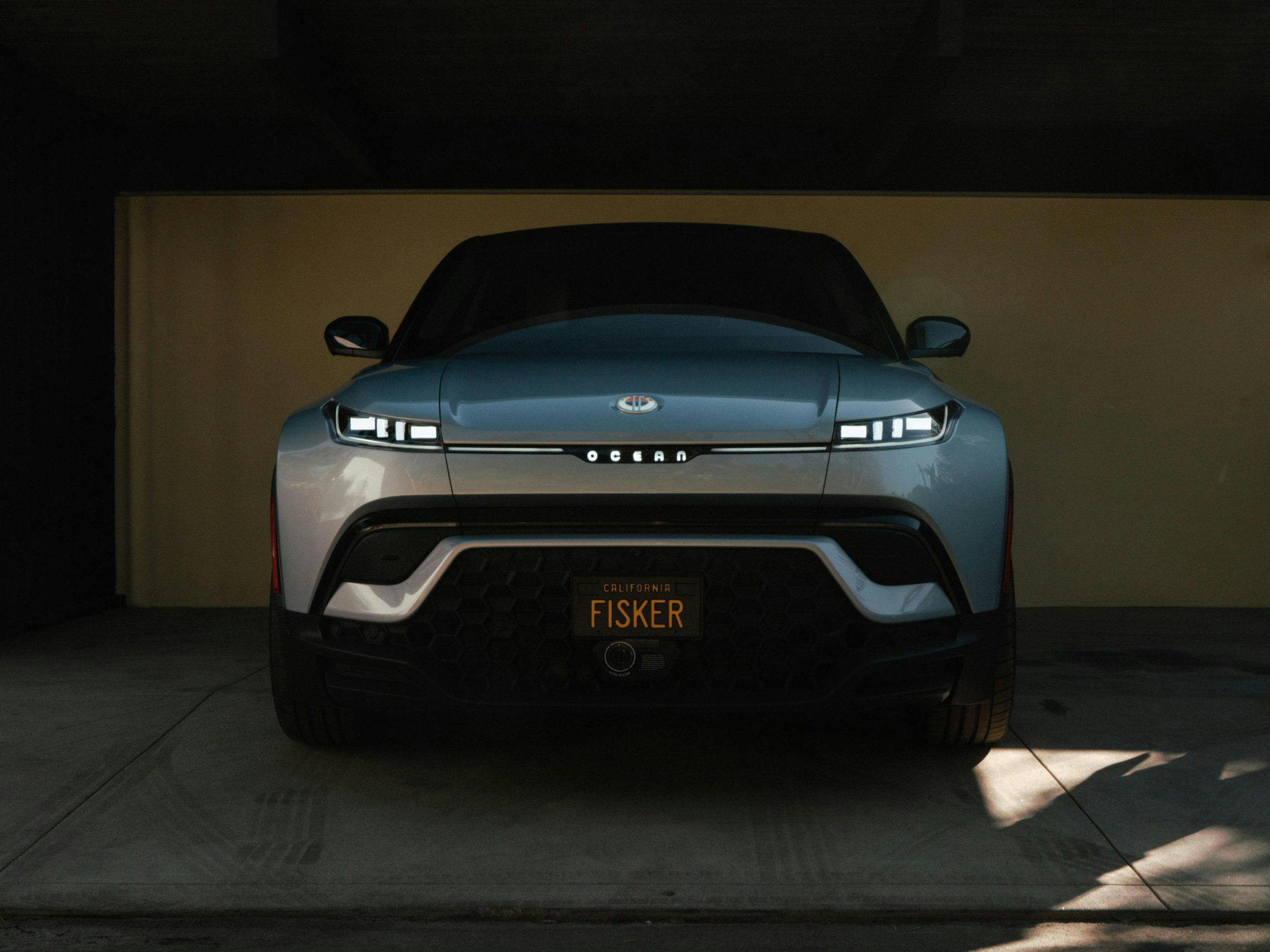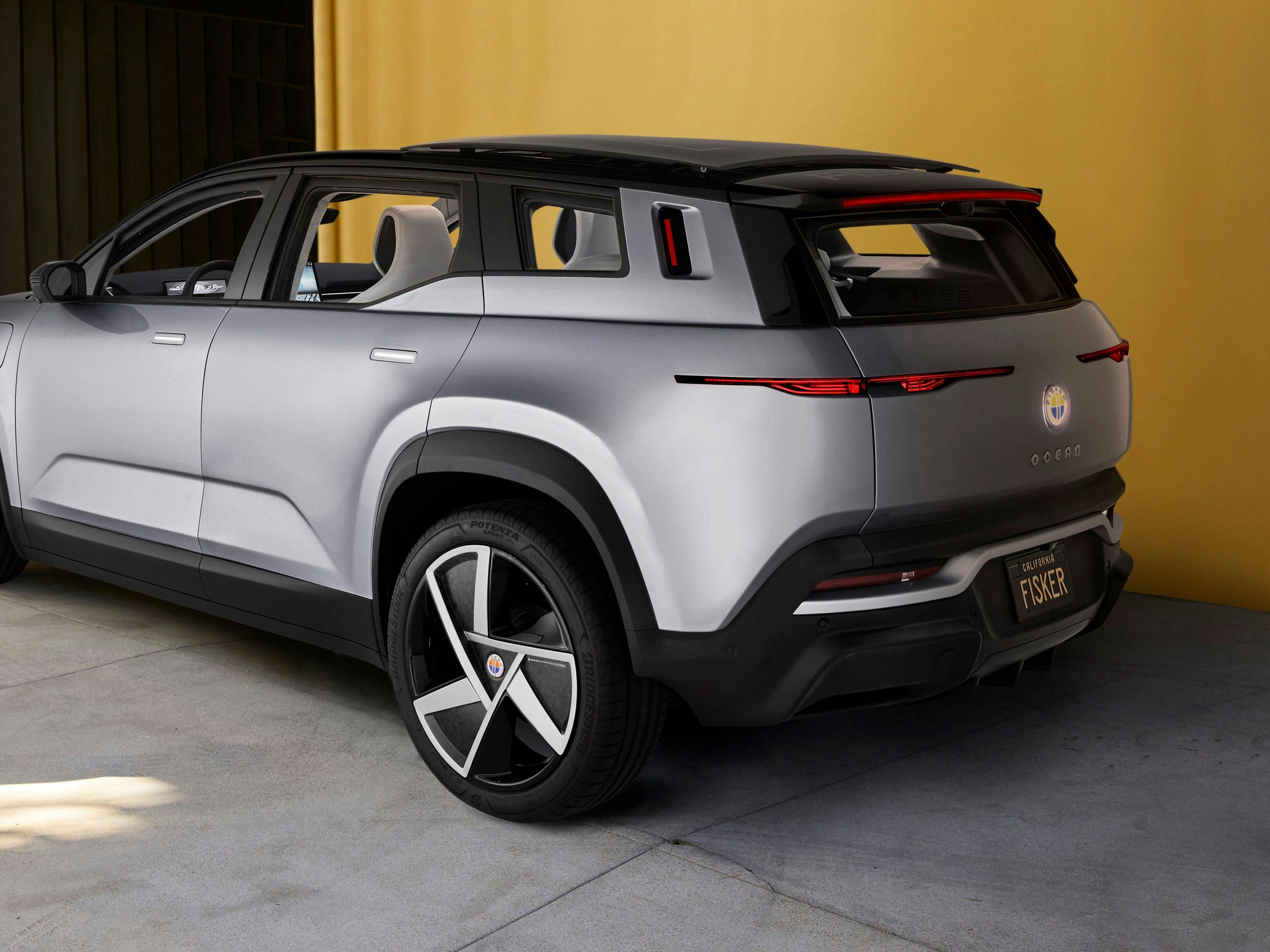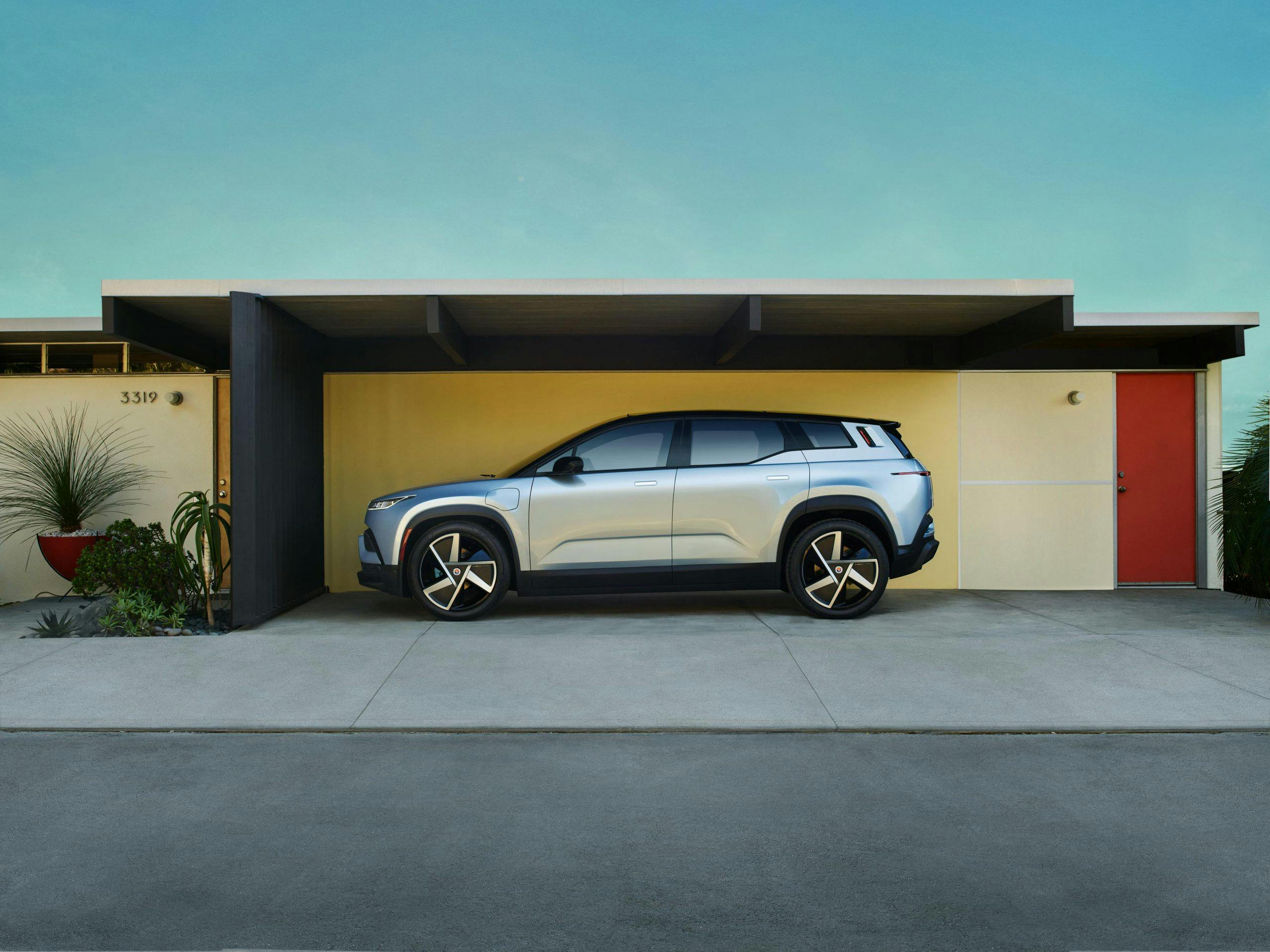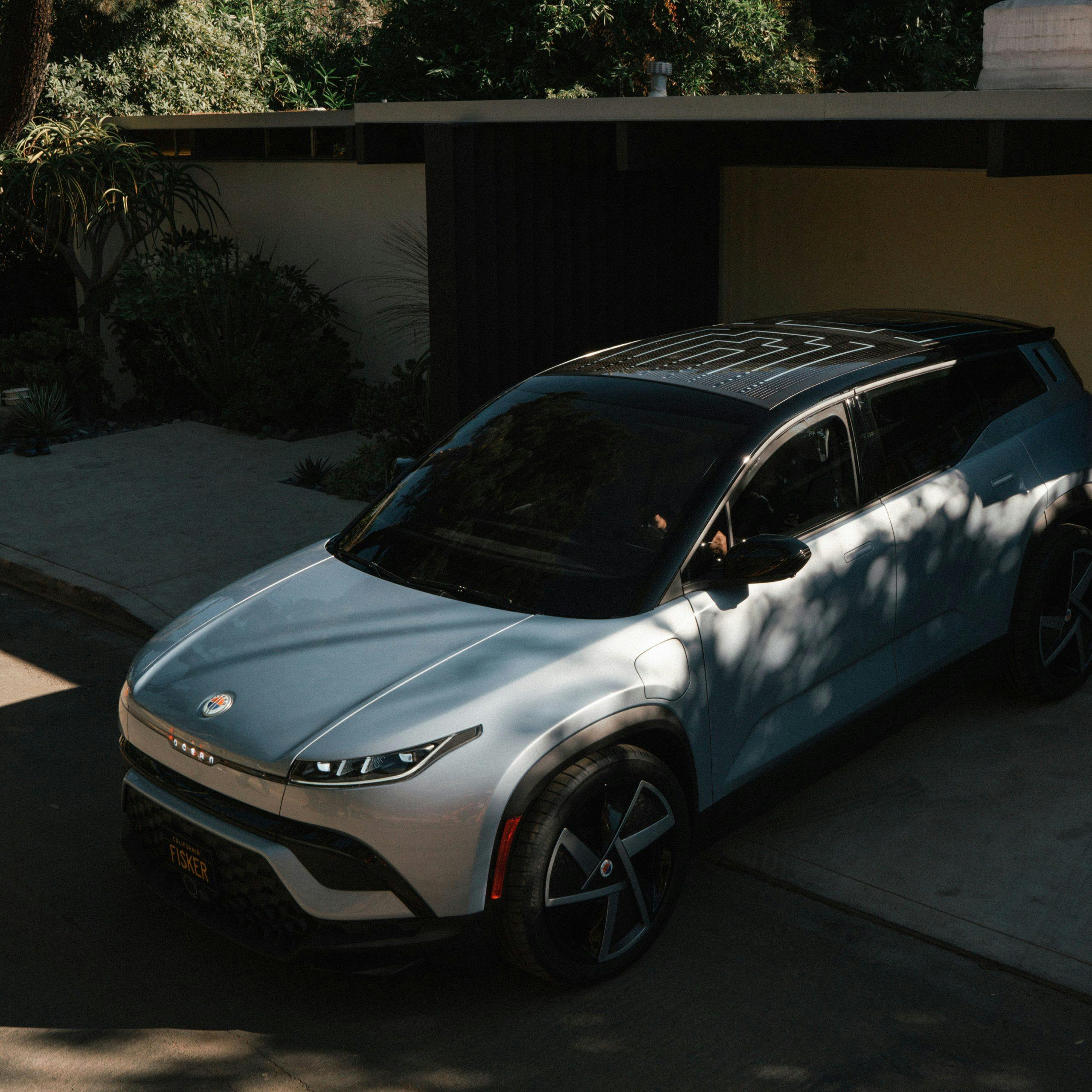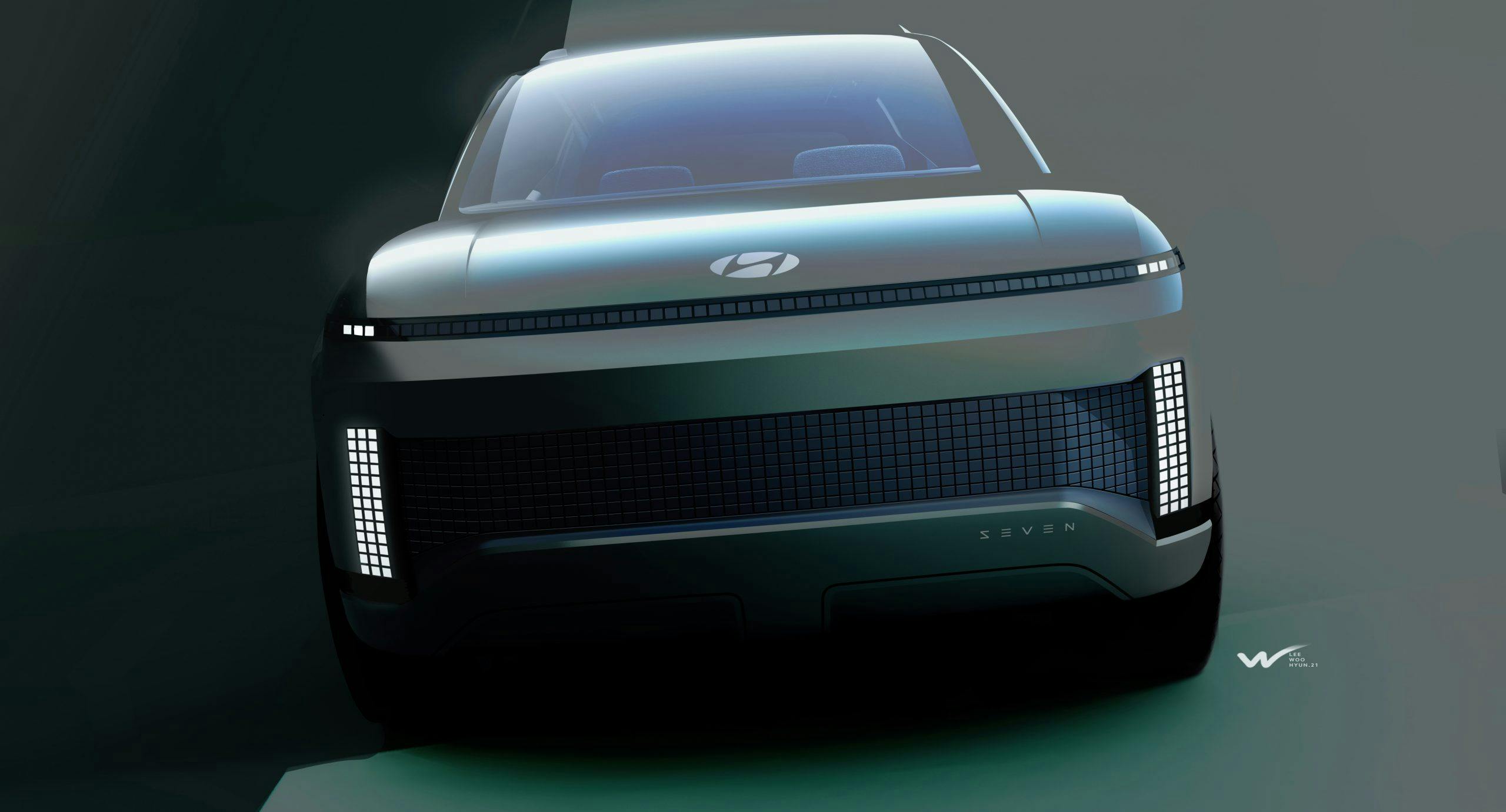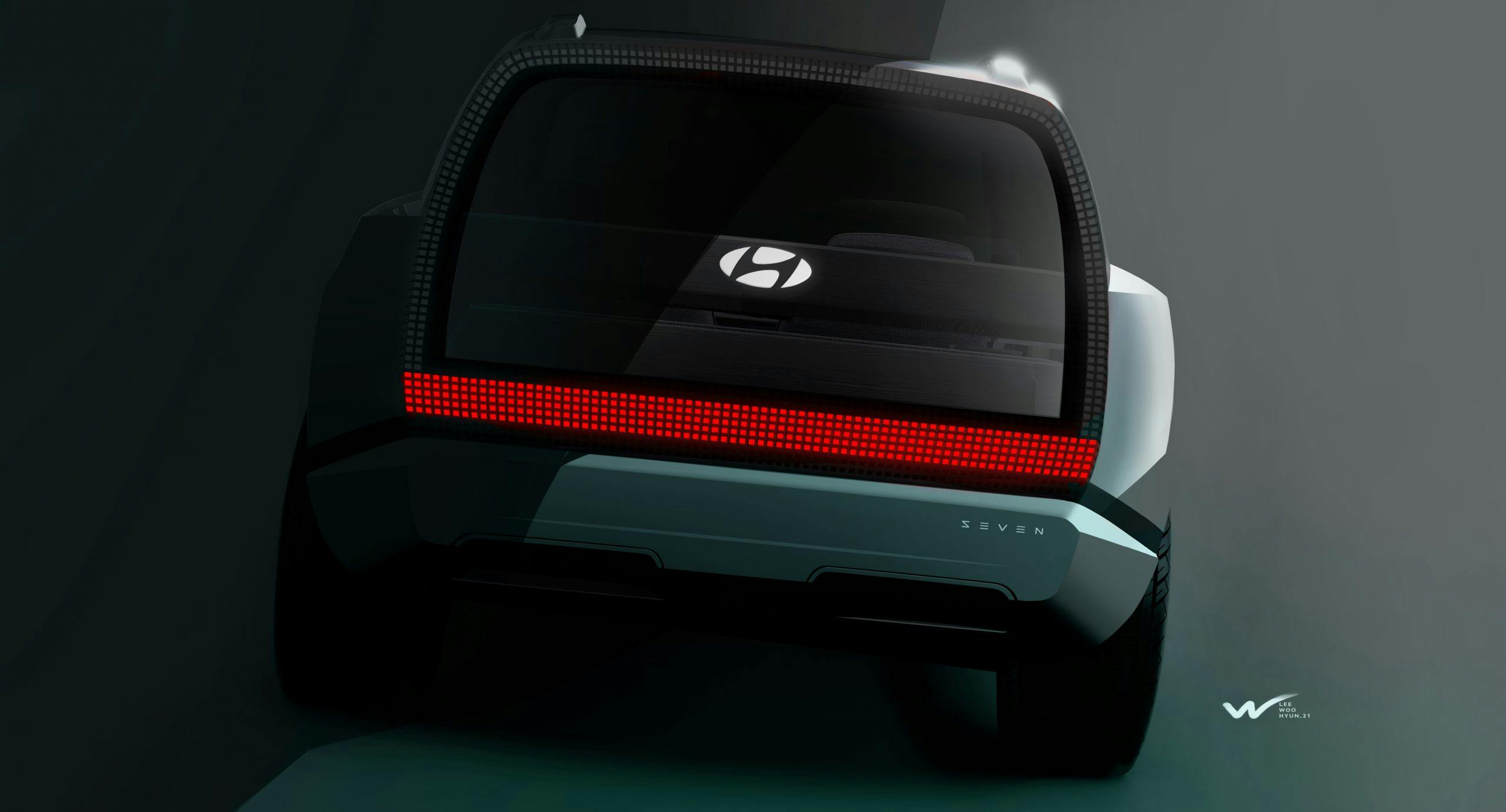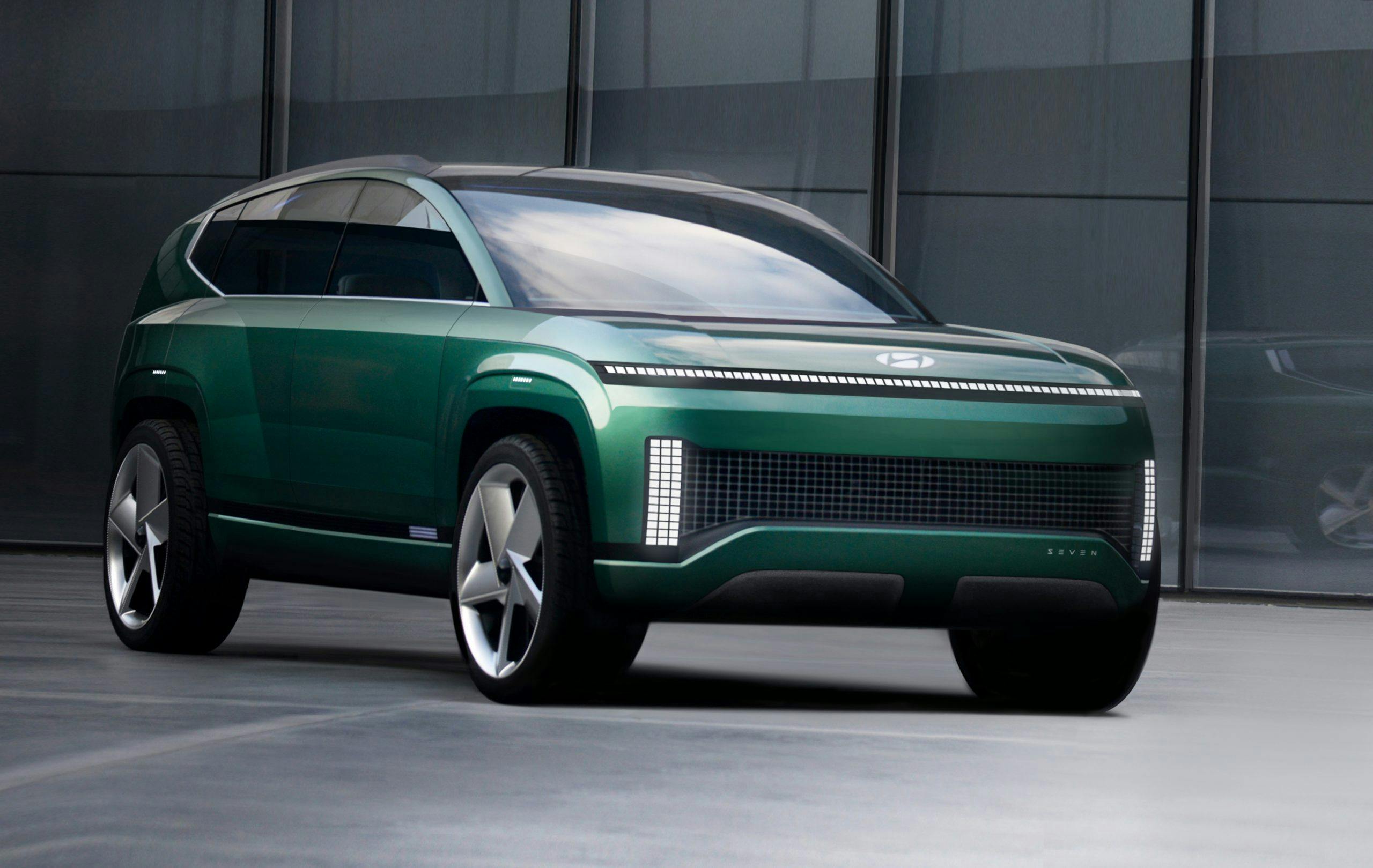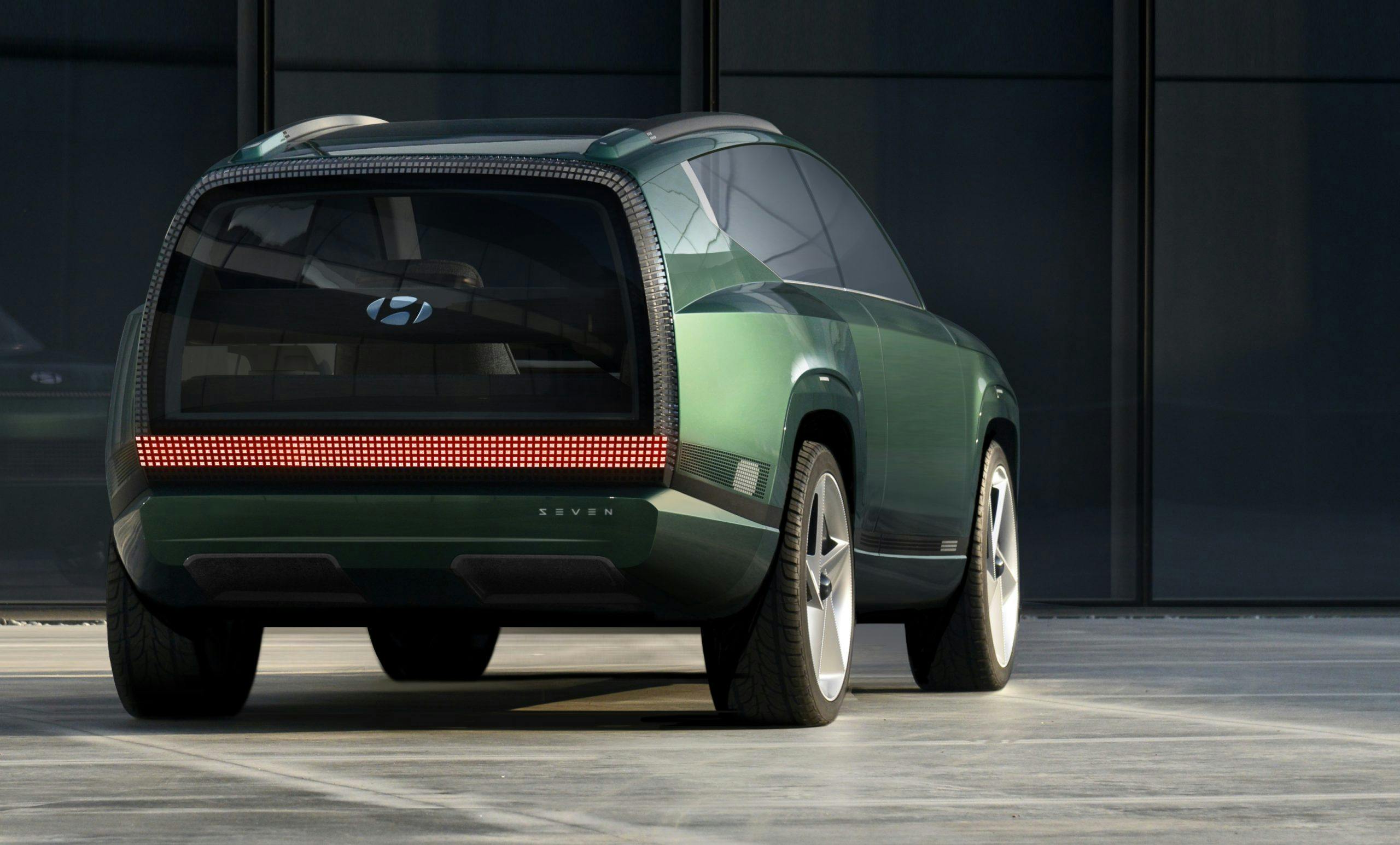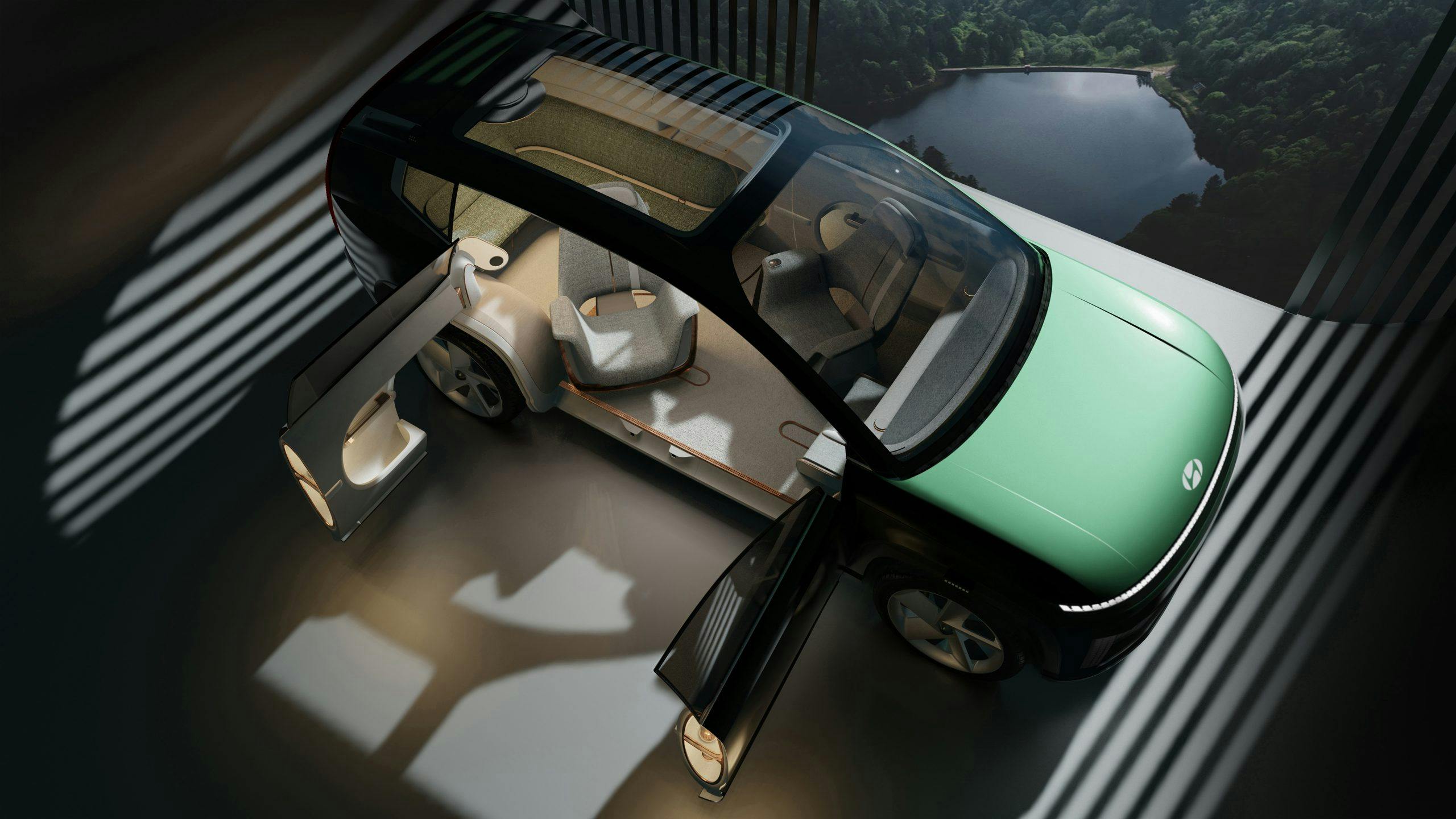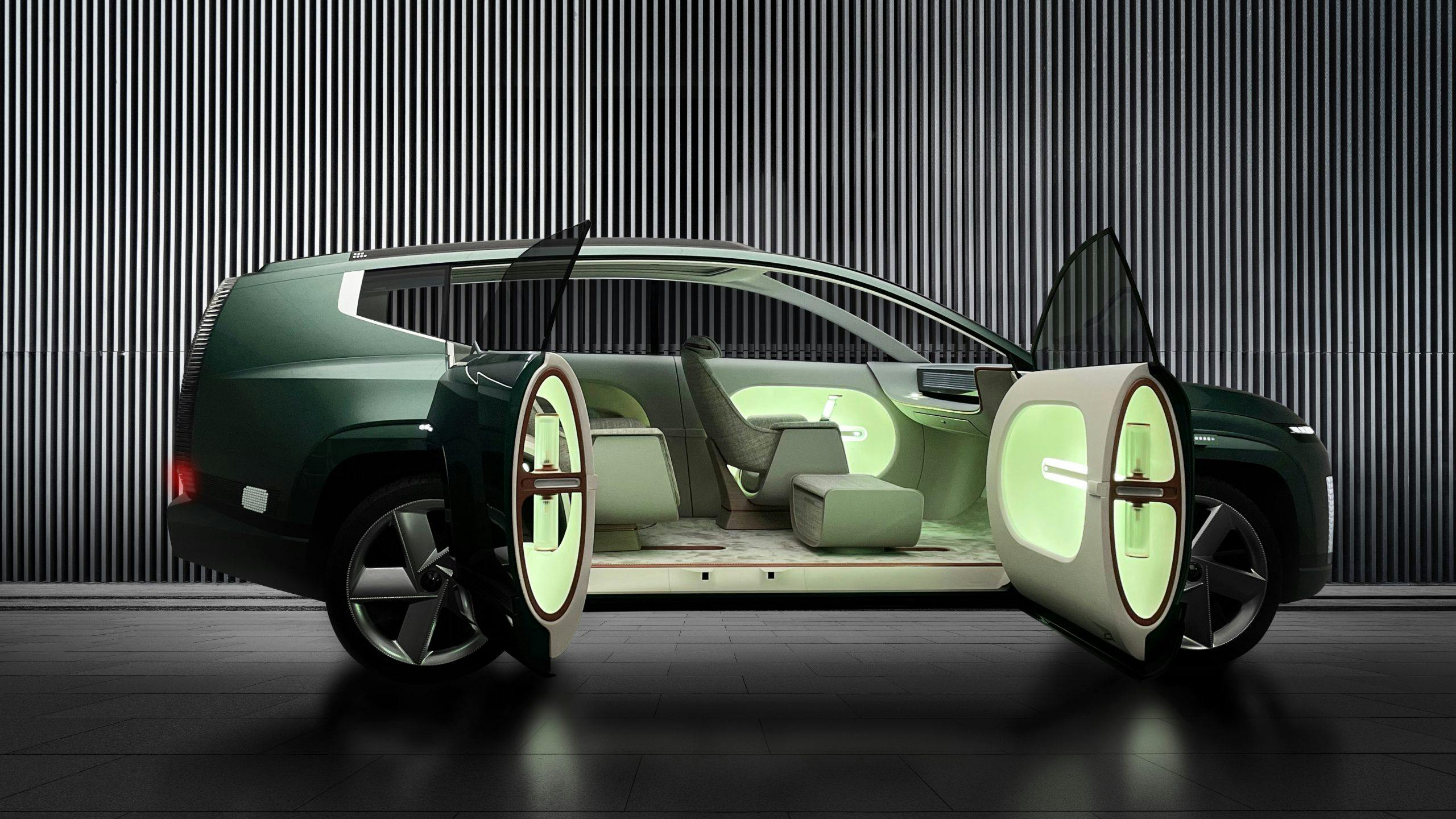Media | Articles
Fisker looks to change the tide, Mazda taps Toyota’s hybrid braintrust, Hyundai’s hefty EV concept
Fisker’s new Ocean all-electric SUV is swimming in new-wave luxury
Intake: Fisker—led by the namesake designer but separate from Karma, which is the brand that now makes the GS-6 (née Fisker Karma)—just revealed an all-new, all-electric SUV called the Ocean. The new ute boasts four trims, the cheapest trim, the Ocean Sport, will begin at just $37,499, while the upper trims, Ocean Ultra and Ocean Extreme, will start at $49,999 and $68,999, respectively. The first 5000 units will be called the Ocean One, and will cost $68,999. The Sport boasts a single front-drive motor and offers an estimate 250 miles of range on a lithium-phosphate battery. The all-wheel-drive Ocean Ultra will clear an estimated 340 miles of range, while the AWD Ocean Extreme is estimated at 350-plus miles. Both of the latter trims will use a different nickel manganese cobalt battery. There’s a solar-panel roof on offer for Ocean Extreme and Ocean One models that should extend the range a bit, and a 17.1-inch rotating central screen that can be positioned horizontally or vertically, depending on whether or not you’re driving. Production is slated to begin on November 17, 2022. Fisker says the Ocean will be available for purchase at the end of next year, and that customers can reserve their allotment today for a $250 deposit.
Exhaust: Fisker is attempting to vault to the front of a burgeoning EV market by appealing to buyers as a supremely sustainable machine. The interior is full of vegan leather and recycled materials including reclaimed fishnets, old t-shirts, and recycled rubber. (Sounds a lot worse than it probably is.) Although it was rumored that the Ocean would use Volkswagen’s MEB platform, it will instead use underpinnings from Graz, Austria-based Magna Steyr, the firm that will assemble the car. “California mode” is a neat trick that retracts the roof and folds down all windows for some semblance of open-air motoring. As with every enthusiastic newcomer to the EV space, the proof will be in the production pudding.
Mazda taps Toyota’s expertise (and parts shelf) to hybridize the new CX-50
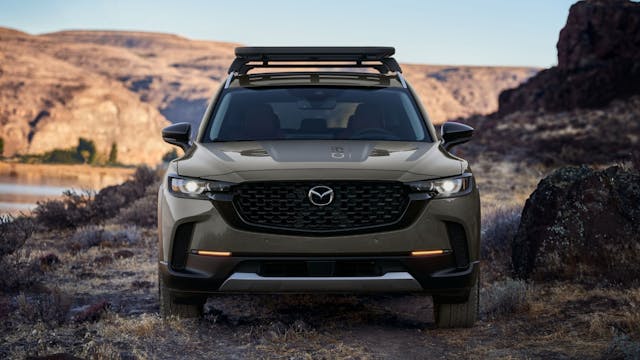
Intake: When Mazda announced an off-road-curious CX-50 crossover, it signaled an attempt to explore a road less traveled for the Japanese brand. Add in a dash of hybrid aspirations—atypical for Mazda—and one can see how this might be a difficult route to take solo. That’s why Mazda will tap Toyota’s expertise on the matter, with plans to source a hybrid system for the rugged CX-50 hybrid model. Both companies currently share a manufacturing roof at the recently minted Mazda Toyota Manufacturing facility in Huntsville, Alabama. As of late September, the plant celebrated its first finished vehicle, a 2022 Toyota Corolla Cross. According to Mazda vehicle development manager Dave Coleman, the two cars are cooked in the same kitchen but the CX-50 will not share any parts with Toyota’s new subcompact. As to the availability of the 2023 CX-50 powered by Mazda’s gasoline 2.5-liter four-cylinder, expect it to start hitting dealers first, sometime next spring.
Exhaust: Mazda is getting in on the off-road SUV game, hoping to woo the droves of enviro-considerate consumers ready to vote with their wallets for products that (somewhat) help care for the planet. A hybrid option will make the CX-50 even more appealing to a much wider crowd, maybe coaxing a few prospects away from the Subaru lots. Sourcing the world leader of hybrid technology is a recipe for success, and the Huntsville arrangement makes it even easier for that to happen seamlessly for both parties.
Hyundai’s SEVEN concept paints an electric SUV future
Intake: Hyundai’s E-GMP platform made its debut as an electrified SUV with the SEVEN concept vehicle. The photos may be deceiving but the SEVEN concept sports a 126” wheelbase, which is roughly three inches longer than a Ford Expedition. The SEVEN is the stuff of concept car fantasy, with adjustable lounge chairs worthy of a Mad Men era office, a B-pillar free body with suicide doors, and Hyundai’s new foray into pixelated lighting pods front and rear. Performance details are sparse, but Hyundai claims a range of over 300 miles and battery charging from “10 percent to 80 percent in about 20 minutes.”
Marketplace
Buy and sell classics with confidence
Exhaust: We’ve seen E-GMP before on the Hyundai Ioniq 5 and Kia EV6, but to see it underpinning something this large demonstrates the platform’s impressive flexibility. Be it GM’s Ultium, VW’s MEB, or Hyundai’s E-GMP, these modular electric platforms feel like the industry is having a Model T moment. The famous Ford that put countless people on wheels had a chassis that spawned a bevy of body styles and was intended for numerous needs around the world. While pricing and final production specifications of Hyundai’s SEVEN are unknown, this concept is likely foreshadowing the future of the mainstream, full-size, family hauling utility vehicle.
Ford inks partnership with chip supplier to iron out future shortages

Intake: Ford Motor Company announced a strategic partnership with semiconductor manufacturing firm GlobalFoundries Inc. (GF) yesterday, part of an effort to shield the automaker against future manufacturing woes caused by the global semiconductor shortage. The non-binding agreement opens the door for GF to create additional semiconductor supply to support Ford’s current vehicle lineup, but the firms also said they will explore expanded semiconductor manufacturing opportunities to support the entire automotive industry. “It’s critical that we create new ways of working with suppliers to give Ford—and America—greater independence in delivering the technologies and features our customers will most value in the future,” says Jim Farley, Ford President and CEO. GF’s feature-rich semiconductors could one day support battery management systems and automated, connected vehicle systems in the coming years.
Exhaust: This is a smart move on Ford’s part. Like GM’s recently-announced partnership with Wolfspeed, another semiconductor manufacturer, this agreement with GlobalFoundries Inc. marks a shift in thinking among the automakers. While it’s certainly not an immediate solution to the chip shortage that’s hamstrung the entire auto industry, the re-shoring of major aspects of the supply chain (Ford also recently announced a partnership with a battery recycling firm) is a solid way to help mitigate the unpredictability of off-shore sourcing, particularly as the industry evolves to the changing realities of electric vehicles.
A British artist is turning classic cars into crypto-art

Intake: A car designer is banking on classic car enthusiasts adding his digital art to their collections. British artist Mike Turner is selling his “Low Poly Car Lab” illustrations as Non Fungible Tokens (NFTs). Turner says his Crypto-Carz work is “an evolving series inspired by clunky-but-cute video game graphics from my youth.” Turner’s focus is on design classics and iconic race and rally cars, and each image is created from 3D CAD models and limited in quantity. Turner says his NFTs sell out within a few hours of being “minted” and are already changing hands for five times their original selling price.
Exhaust: It didn’t take long for the worlds of NFT and classic cars to collide. Would you invest in these cute crypto cars?
Is this stock Supra really worth $300,000?

Intake: An Illinois exotic car dealership is selling a bone-stock 1993 Toyota Supra Turbo for $299,800. The one-owner car is fitted with a six-speed manual transmission and has covered just 9683 miles in 28 years. The car is painted in an uncommon Anthracite gray, has the removable Sport Roof panel, but is, surprisingly, free of the trademark hooped rear spoiler. Power comes from the twin-turbocharged three-liter 2JZ GTE inline-six with 320 hp.
Exhaust: The price of Supras is soaring, but even so, this seems sky-high; Diamond Motorworks wants almost a dollar per pony. Our valuation data places #1-condition (Concours) equivalent at $134,000, which is less than half the price of this example. The record Supra sale does stand at $550,000, but that was for a Fast and Furious star car driven by Paul Walker.

